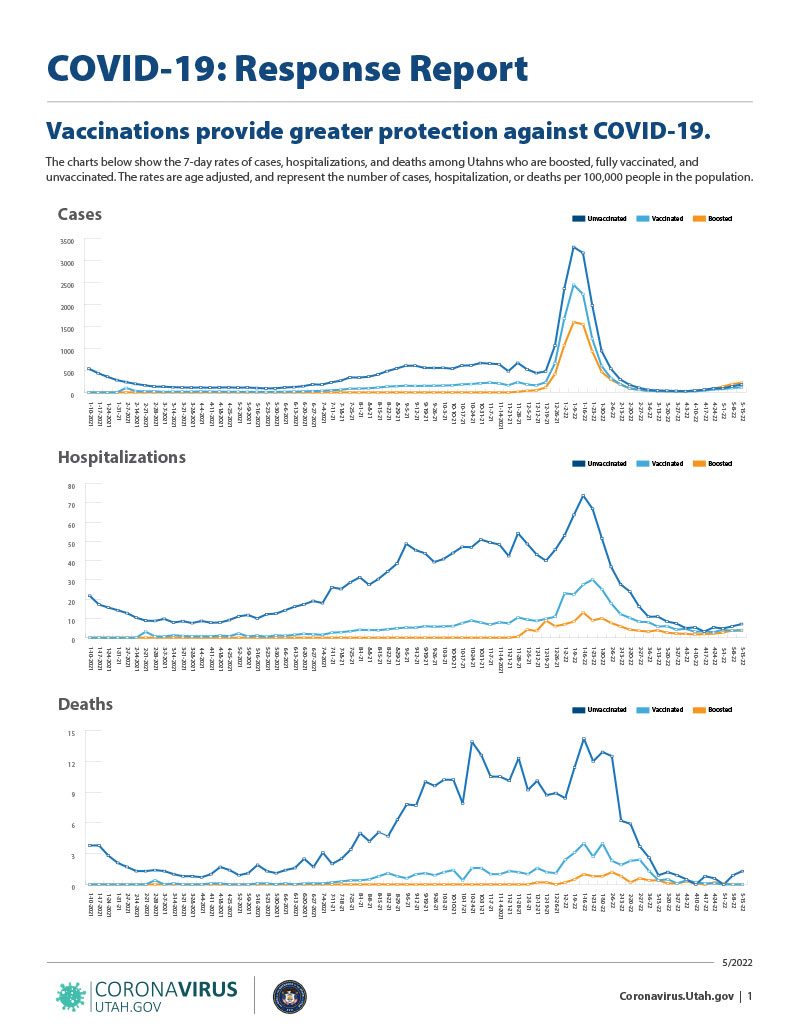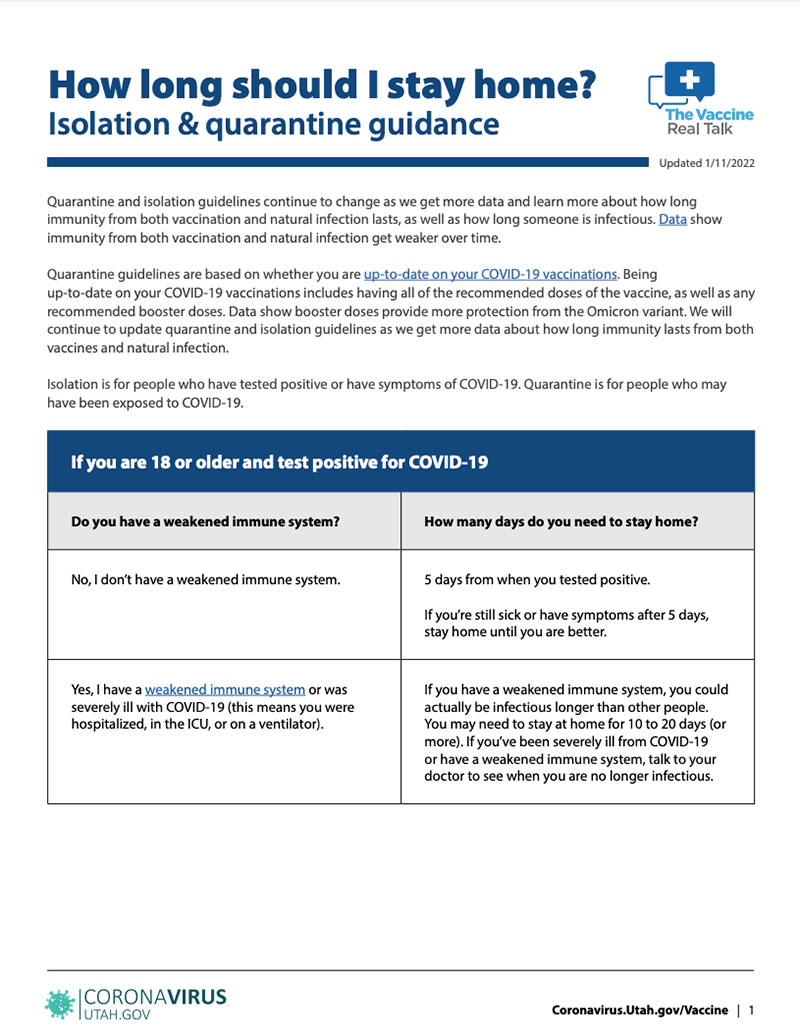K-12 School Recommendations
Updated 8/26/2022
Our goal is to keep children healthy while attending school in-person.
Our goal is to keep children healthy while attending school in-person. The Utah Department of Health and Human Services recommends a layered prevention approach consistent with the Utah COVID-19 Disease Plan and CDC school guidelines to minimize the impact of COVID-19 exposures and outbreaks in school settings and maximize opportunities for children to participate in in-school learning and extracurricular activities.
COVID-19 can severely disrupt learning, school attendance, and involvement in extracurricular activities. Children can and do get COVID-19 and are at risk for severe illness from the virus. Even with mild illness, children can spread the virus to other people. This is why using layered prevention strategies in schools are so important.

Local health departments and local education agencies (LEAs) should create layered prevention strategies so children can remain safely in school. Local health departments and LEAs will work together, using local data, to identify which recommended protective measures to use to protect the health of K-12 students and school staff in their area. School administrators will watch the data on what is happening in their local areas as they work to keep children in schools as safely as possible.
Parents and school staff who have questions about how COVID-19 will be handled in their school or at extracurricular activities should contact their local health department or school for more information. Your local health department may have different recommendations than what is provided on this page or on the CDC website.
The Utah Department of Health and Human Services strongly recommends the following layered prevention strategies in K-12 schools:
- Encouraging everyone to get vaccinated for COVID-19
- Wearing a mask when community levels are high
- Isolating at home if you test positive for COVID-19
- Taking precautions after an exposure
- Testing for COVID-19
- Test to Stay
- Staying home when you’re sick
- Physical distancing
- Improving or increasing indoor ventilation
- Hygiene practices
- Cleaning and disinfection
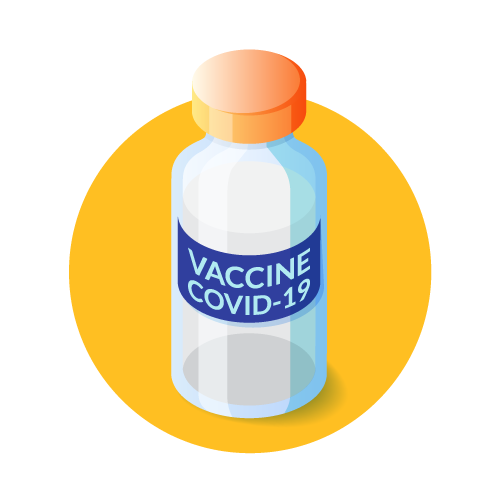
Vaccination
Vaccination for COVID-19 is not required for students to attend K-12 public school or participate in extracurricular activities. However, immunizations against vaccine-preventable diseases, including COVID-19, is the best way to keep our children safe and healthy in school and free from disruptions to their learning and extracurricular activities.
Being up-to-date on your COVID-19 vaccinations means having all of the recommended doses of the vaccine, as well as any recommended booster doses.
You can get vaccinated as soon as you are no longer in isolation and don’t have any symptoms of COVID-19.
Encouraging immunization against COVID-19 is an important prevention strategy. We ask all Utahns to carefully consider getting immunized and to seek out credible information about the vaccines from their healthcare provider and reputable health organizations. The vast majority of all COVID-19 deaths, hospitalizations, and cases in Utah are happening to people who are not vaccinated. It’s important for parents to talk to their child’s trusted healthcare provider if they have questions or concerns about vaccinations.
COVID-19 vaccinations are FREE and available to anyone 6 months of age and older. Booster doses are also recommended for everyone ages 5 and older.
Face masks
There is clear scientific evidence that wearing a face mask reduces the spread of COVID-19. The American Academy of Pediatrics recommends everyone in a school wear a mask at this time, whether or not they are vaccinated. The CDC has recommendations on when to wear masks in public, including at school, based on your county’s COVID-19 levels. It’s recommended that masks be worn at school if the community level is high. You can search your county’s levels at https://www.cdc.gov/coronavirus/2019-ncov/your-health/covid-by-county.html.
Parents may choose to have their child wear a mask at school if they want. In areas where there is no mask requirement, the decision to wear a mask at school remains optional.
Utah law outlines the process for health departments to establish mask requirements if needed. Utah law prohibits a “local education agency, an LEA governing board, the state board, the state superintendent, or a school from requiring face masks to attend or participate in in-person instruction, LEA-sponsored athletics, LEA-sponsored extracurricular activities, or in any other place on the campus of a school or school facility.” A health department could issue an order requiring masks in schools; however, the Legislature has set forth a process that must be followed which requires approval from the state or county elected officials as well as a 30-day limit on the order. The law also allows the Legislature or elected county officials to overturn an order at any time.

Download mask flyer
(English / Arabic / Bhutanese / Bosnian / Burmese / Cantonese / Chinese / Dari / French / Karen / Kinyarwana / Kirundi / Korean / Lingala / Marshallese / Nepali / Pashto / Persian-Farsi / Portugese / Rohingya / Russian / Samoan / Somali / Spanish / Swahili / Tagalog / Thai / Tigrinya / Tongan / Vietnamese)

Stay at home if you test positive or have symptoms of COVID-19
Anyone who tests positive for COVID-19 needs to stay at home and isolate for at least 5 days. This means to stay home except to get medical care. You should not go to school, work, church, group gatherings, or extracurricular activities. Stay home if you have symptoms of COVID-19 or test positive, even if you are vaccinated or had COVID before.
If you have symptoms, stay home until:
- You have been fever-free for 24 hours without using medicine to lower your fever,
- Your symptoms have improved for 24 hours,
- It has been at least 5 days from the day your symptoms first started.
You may need to stay at home longer than 5 days if your symptoms have not gotten better. It’s best to keep your child home if they are feeling sick, no matter what the illness is. This helps protect others from getting sick too.
If you never had symptoms, stay home until:
- It has been at least 5 days since the day you were tested. The day you test positive is called day 0. Stay home until it has been 5 full days after you test positive (days 1-5).
Wearing a mask around others is important after you test positive for COVID-19, even if you don’t feel sick. Wear a well-fitting mask around others and in public for another 5 days after you end your isolation at home.
Who needs to quarantine after being around me?
You are infectious and can spread the virus to others starting up to 2 days before you first had symptoms until your isolation period is over. If you never had symptoms, you are infectious starting 2 days before the day you were tested for COVID-19. Anyone who came into close contact with you during this time should take precautions. Close contact means you were closer than 6 feet or 2 meters (about 2 arm lengths) to a person who has COVID-19 for a total of 15 minutes or longer in a 24-hour period while they were infectious.
A public health worker will try to contact you if you test positive to conduct a case investigation. They will ask you about where you may have gotten COVID and who else may have been exposed. Sometimes people call this contact tracing. A public health worker may call you or send you a text or email.
Anyone who tests positive for COVID-19 should isolate at home for at least 5 days.
Quarantine recommendations after an exposure
It can be very hard to stay home and miss work or school after being exposed to someone who has COVID-19. It can also be very hard to stay isolated from people who have COVID-19 and live in your home. That’s why the CDC updated their quarantine recommendations and no longer recommends people stay home after they are exposed to COVID-19. However, you still need to take precautions to protect other people:
- Wear a well-fitting mask for 10 days after your exposure when around others, during extracurricular activities, at school, and in public. Avoid going to places or participating in activities where it is hard to wear a mask during these 10 days, such as a gym or restaurant.
- Get tested 5 full days after you were exposed to COVID-19.
- Watch for symptoms of COVID-19. If you get sick, stay home, follow isolation guidelines, and get tested.
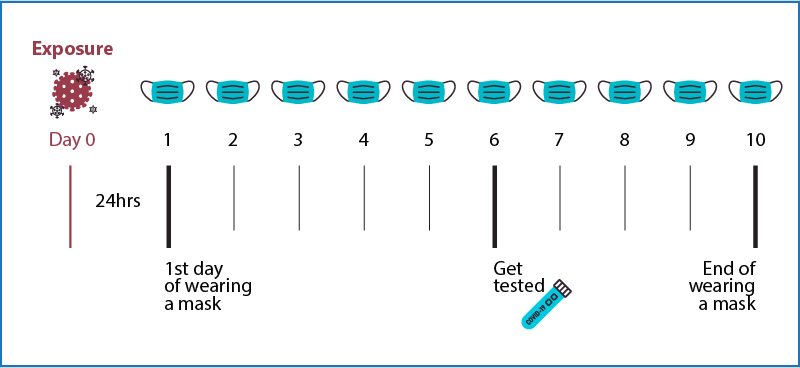
Image courtesy of Salt Lake County Health Department
While not required, we recommend your child get tested after their exposure. Wait 5 full days after the exposure to get your child tested.
This lets enough of the virus build up to be detected by the tests. Your child may need to get tested more than one time, depending on the type of test and if he or she had symptoms at that time. If your child tests positive or develops symptoms, keep them at home and follow isolation guidelines.
We know there is a chance people can be re-infected with COVID-19. We also know some people can test positive after they have COVID-19 even though they are done with isolation and no longer infectious to other people. The CDC and Utah Department of Health and Human Services recommends you not get tested after an exposure if it’s been less than 90 days (about 3 months) since you first tested positive for COVID-19, as long as you don’t have new or worsening symptoms. However, if you have new or worsening symptoms, use an antigen test and test again.
Other quarantine options for schools
Local health departments and local education agencies (LEAs) may choose to offer other options to help students or staff who have been exposed to COVID-19 and may not be able to quarantine at home, while still protecting the other students and staff in the school. Local health departments and LEAs will decide which quarantine options are recommended in their area. Recommendations may be different across the state.
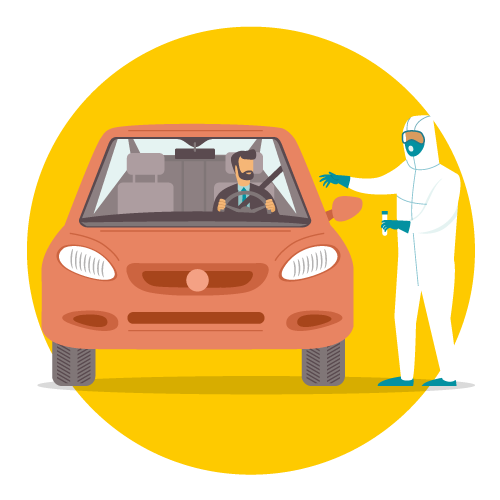
Testing for COVID-19
Anyone who has symptoms of COVID-19 should stay home and get tested.
You should not attend school or participate in extracurricular activities if you have symptoms of COVID-19. If you get symptoms of COVID-19, isolate right away, call a healthcare provider, and get tested for COVID-19, even if your symptoms are mild.
We know there is a chance people can get re-infected and that people who are vaccinated can get COVID-19. We suggest anyone with symptoms stay home and get tested, just to be safe.
Stay home while you wait for your COVID-19 test results.
Anyone who is exposed to COVID-19 should get tested.
Get tested if you came into close contact with someone who tested positive for COVID-19. Wait 5 days after your exposure to get tested. This lets enough of the virus build up in your body to be detected by the tests. The vaccines do not interfere with the accuracy of COVID-19 tests. You may need to get tested more than one time, depending on what type of test you had, when you were tested, and if you had symptoms at the time of your test.
We know there is a chance people can get re-infected. We also know some people can test positive after they have COVID-19 even though they are no longer infectious to other people. The CDC and Utah Department of Health and Human Services recommends you not get tested again for COVID-19 if it’s been less than 90 days (about 3 months) since you first tested positive, as long as you don’t have any new symptoms. However, if you have any new symptoms or it’s been more than 90 days (about 3 months) since you tested positive, you should get tested again with an antigen test.
Students who have had COVID-19 within the last 90 days will need to participate in any Test to Stay events held at their school. The local health department will verify if the student had a confirmed COVID-19 infection within the 90-day timeframe of the Test to Stay event. Students who have confirmed COVID-19 infections (meaning a positive test) in the last 90-days will not need to stay at home.
Test to Stay
Governor Cox signed HB183 In-person Learning Amendments on Wednesday, February 2, 2022. The new law is effective immediately.
The law makes key changes to the Test to Stay program:
- The requirement to conduct Test to Stay events only applies if the governor, president of the Senate, speaker of the House, and state schools superintendent jointly determine, in coordination with the Utah Department of Health and Human Services, that Test to Stay would be effective in limiting the spread of COVID-19 based on the currently circulating variant.
- Per their letter dated January 13, 2022, the governor, speaker, president, and superintendent have indicated that Test to Stay is not effective against the currently circulating Omicron variant.
- As a result, schools are not required to initiate Test to Stay events at this time.
- The timeframe for counting cases towards a school’s Test to Stay threshold has changed from 14 days to a “number of days that is equal to the estimated incubation period” as defined by the Utah Department of Health and Human Services.
- Although TTS events are not currently being held, the Utah Department of Health and Human Services, in consultation with Utah’s local health departments, has identified “the estimated incubation period” for Omicron as 7 days. This timeframe should be used for determining case counts until another variant emerges. This information will be posted on the COVID-19 dashboard at https://coronavirus.utah.gov/case-counts/#schools.
- The law also addresses the conditions under which a local education agency can make the determination to transition to remote learning. We recommend you contact the Utah State Board of Education with questions related to this aspect of the new law.
The law does not prevent voluntary testing within school communities and we encourage schools to work with their local health departments to respond to outbreaks and cases as they arise.
Help conducting a testing event
The Utah Department of Health and Human Services provides training resources for schools on how to complete a testing event at https://coronavirus.utah.gov/school-training. At the request of LEAs, the Utah Department of Health and Human Services also helps conduct testing events:
- Entire testing event (pre-registration, testing, and reporting). The school only needs to provide the location, time, and staff to help direct those getting tested.
- Testing (swabbers) only. The school does the pre-registration and reporting.
- On-site technical assistance for reporting and registration. The school does the testing and pre-registration.
Schools must get parental permission prior to testing.
Before a COVID-19 test is administered to a student, the school must get written permission from the student’s parent or guardian. Schools should clearly state on the permission document whether parents are giving permission to test a student for the duration of the school year, or if the student’s testing is for a specific event (for example, Test to Stay). This helps the school move quickly to hold a testing event if the outbreak threshold is met and prevent disruptions to in-classroom learning. Schools may choose to get permission from parents during each term instead of one time for the entire school year, but should not ask for permission more than once every term. A parent may revoke permission for their student’s participation in testing events at any time during the school year by notifying the school in writing.

Students who are tested as part of Test to Stay:
- Must isolate at home if they test positive, even if they had symptoms before the test or are up-to-date with their COVID-19 vaccinations. They may return to in-person learning after they are done with their isolation period.
- May continue in-person learning if they test negative and do not have any symptoms of COVID-19.
- Students who did not participate are cleared to return to school after the estimated incubation period.
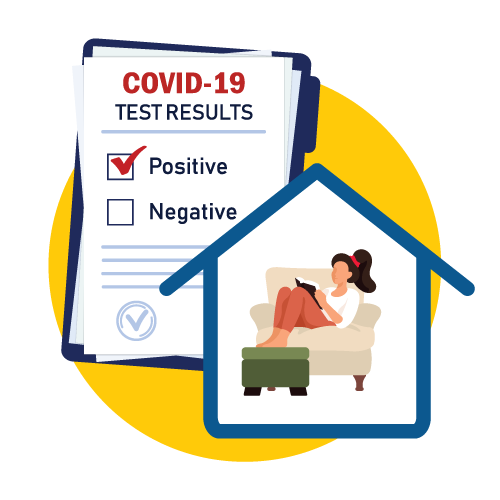
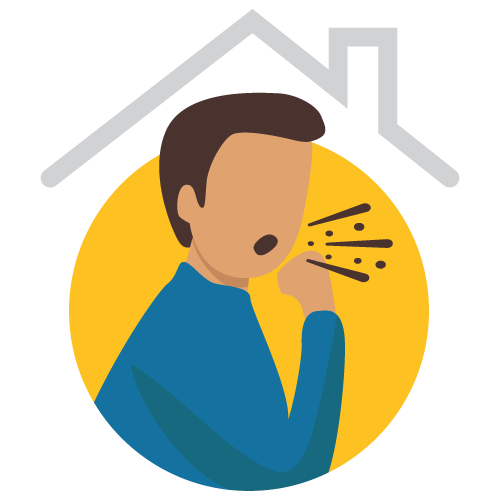
Stay home when you’re sick
Anyone who has symptoms of COVID-19 should stay home and get tested. It’s best to keep your child home if they are feeling sick, no matter what the illness is. This helps protect others from getting sick too.
Do not attend school or participate in extracurricular activities if you have symptoms of COVID-19. Stay at home, call a healthcare provider, and get tested for COVID-19 right away, even if your symptoms are mild. Symptoms of COVID-19 may look like other common illnesses, like strep throat, colds, flu, or allergies.
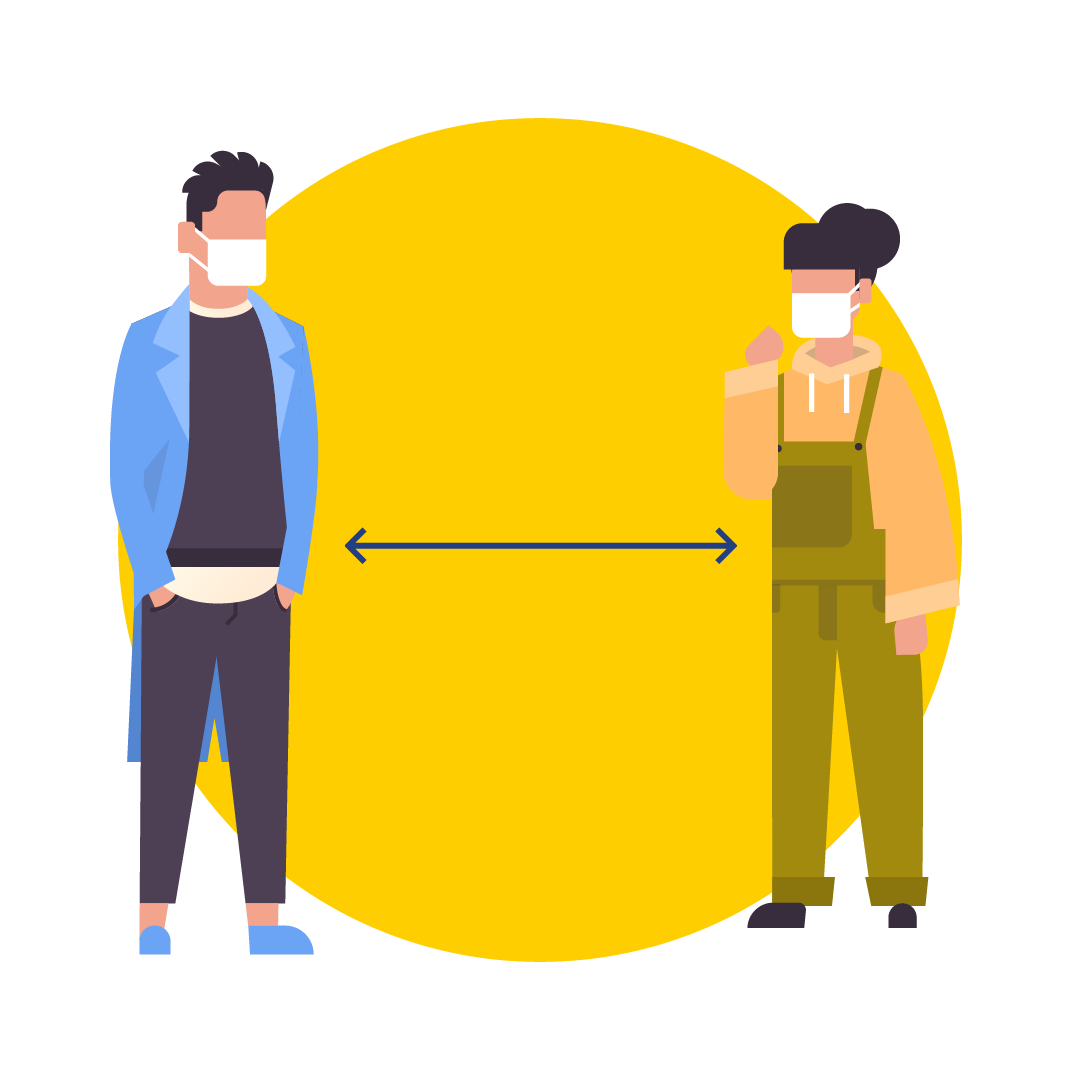
Physical distancing
Physical distancing can be used by schools to help provide additional layers of protection from COVID-19. This means to stay at least 6 feet (2 meters) away from other people. However, studies showed physical distancing of only 3 feet in a classroom can be effective when other prevention measures are taken, including mask wearing.

Ventilation
Improving ventilation is an important COVID-19 prevention strategy that can reduce the number of virus particles in the air.
The Utah Department of Health and Human Services is working with the Utah Physicians for a Healthy Environment to provide free HEPA air filters in all K-12 school classrooms in Utah. HEPA air filters can significantly improve indoor air quality and support student health. School administrators can request filters by contacting their local health department or filling out a form at https://www.uphe.org/free-air-purifiers-for-utah-schools/.
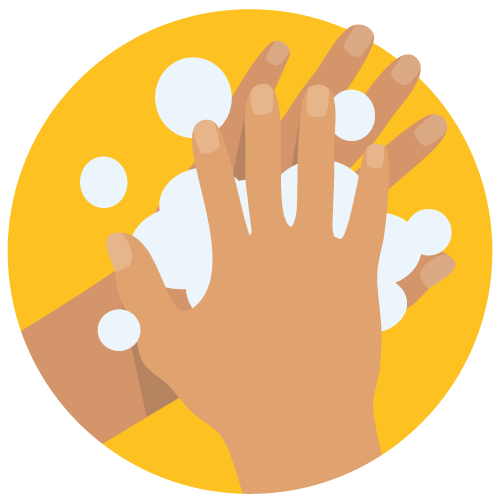
Hygiene practices
Good hygiene practices are some of the best ways to fight any illness. This includes COVID-19.
- Try not to touch your eyes, nose, or mouth with unwashed hands.
- Wash your hands often for 20 seconds with soap and water. If you do not have soap and water, use hand sanitizer that has at least 60% alcohol.
- Cough or sneeze into your elbow or a tissue. Do not use your hands.
- Do not shake hands or touch other people. Use other ways to greet people without touching.
- Try not to touch surfaces many people touch.
- Use products in EPA List N to clean and disinfect surfaces every day that are touched often.
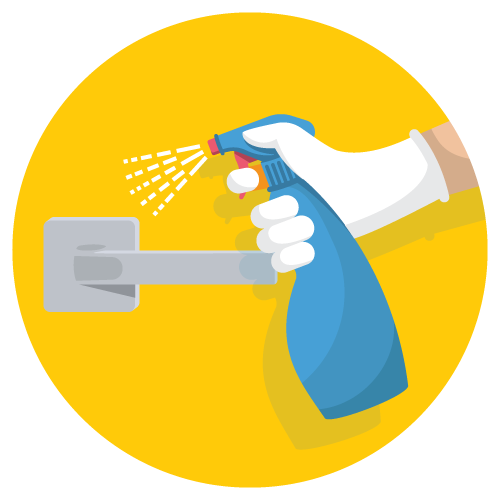
Cleaning and disinfection
Cleaning, sanitizing, and disinfecting prevent the spread of COVID-19. Wait 24 hours to clean and disinfect the school or classroom after someone has tested positive for COVID-19.
State legislation that impacts schools
There are several state laws that will impact how LEAs and health departments respond to COVID-19 during the upcoming school year. A brief summary of these laws is provided below. There may be other local, state, or federal laws and regulations that impact schools during the pandemic. Local officials should consult with their own legal counsel for advice on how these or other laws and regulations impact strategies to prevent COVID-19 in K-12 schools.
- All schools in Utah are required to have at least 4 days of in-person instruction per week.
- Test to Stay is required in K-12 schools. Testing events should be done in coordination with the local health department and are required to take place when a certain number of students test positive for COVID-19 in a 14-day window. Schools can request assistance from the Utah Department of Health for Test to Stay events.
- The Governor and Utah Department of Health and Human Services must provide 24-hour notice to the Legislature before declaring a Public Health Emergency or issuing an Order of Constraint. An example of an Order of Constraint includes requiring masks to be worn by all students in schools.
- A local health department must provide 24-hour notice to their county elected officials before declaring a Public Health Emergency or issuing an Order of Constraint.
- The Legislature or elected county officials may overturn a Public Health Emergency or Order of Constraint at any time.
- There is a 30-day maximum time limit on an initial Public Health Emergency or Order of Constraint. The Legislature or elected county officials must be provided 10 days notice if the Utah Department of Health and Human Services or local health department requests an extension of a Public Health Emergency.
- All new Public Health Emergencies and Orders of Constraint must follow the requirements of Senate Bill 195.
- Does not allow a local education agency, an LEA governing board, the state board, the state superintendent, or a school to require face masks to attend or participate in in-person instruction, LEA-sponsored athletics, LEA-sponsored extracurricular activities, or to be in any other place on the campus of a school or school facility.
- Does allow for a private school to require face masks.
- Does not allow an institution of higher education (like a college or university) to require a face covering to participate in or attend instruction, activities, or to be in any other place on the campus, except for a medical setting at an institution of higher education.
- A governmental entity can’t require a person to get a COVID-19 vaccine that was authorized for use under Emergency Use Authorization as a condition of employment, or to participate or attend an activity of the governmental entity.
- This restriction would not apply to a COVID-19 vaccine that receives full authorization from the FDA.
- Employees who work in a public health or medical setting can be required to receive COVID-19 vaccines authorized for use under Emergency Use Authorization.
- Does not allow funding appropriated by the Legislature to be used for financial incentives, awards, drawings or prizes, or any similar incentive to anyone for receiving a vaccination.
Everyone must help to prevent the spread of COVID-19 in our schools.

Utah Department of Health and Human Services
Guide and Support
- Disease plan
- Educational messaging
- Testing and vaccination resources
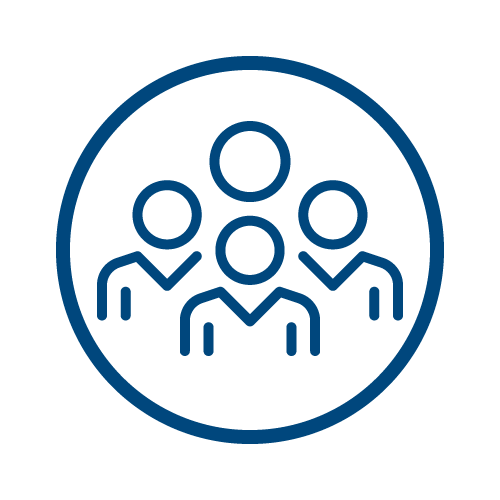
Local Health Departments
Relate and Respond
- Local partnerships
- Case investigations / duty to respond
- Supportive actions (e.g., testing, vaccinations)
Schools
Educate and Support
- Preventive measures
- Case reporting
- Coordination and communication
Parents and Families
Choose and Protect
- Vaccinations
- Indoor masking
- Testing
Elected Leaders
Govern and Represent
- Policy
- Voice of constituents
- Accountability
Utah’s public health system has clear direction from the Legislature to:
- Investigate and control the spread of epidemic infections and communicable diseases (26-6-3(1)).
- Work with healthcare providers, schools, and others to track positive cases (26-23b-103 and R386-702-4).
- Work with schools and communities to mitigate spread (26-1-30 and 26-6-6(8 & 9)).
- Provide guidance on when a school meets the 2% threshold of COVID-19 cases (or 30 students in schools with <1500 students) (26-6-42(3) and 53G-9-210(3)).
- As requested, work with local education agencies (LEAs) to conduct testing events (Test to Stay) when the 2% threshold is met (26-6-42(2)).
Schools (public, private, parochial nursery school, licensed or unlicensed day care center, child care facility, family care home, Head Start program, kindergarten, elementary, or secondary school through grade 12) have clear direction from the Legislature to:
- Report to the department or the local health department regarding any individual suffering from or suspected of having a disease that is communicable (26-6-6(8 & 9)).
Local education agencies (LEAs) have clear direction from the Legislature to:
- Offer in-person instruction (53G-9-210(2)).
- Require schools that reach the 2% threshold of COVID-19 cases (or 30 students in schools with <1500 students) to initiate Test to Stay (53G-9-210(2)).
- Not require face coverings to attend or participate in in-person instruction or LEA-sponsored athletics and extracurricular activities (53G-9-210(5)).


